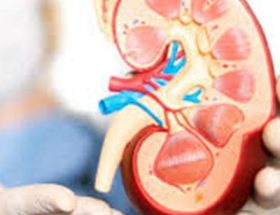Departments
Obesity Surgery
At Mid City Hospital we offer a truly comprehensive and multidisciplinary approach to your excessive weight problem. In this page we will try to provide you with the necessary information regarding the obesity, different surgical options that we offer and their advantages and disadvantages.
 Obesity becomes “morbid” when there is development of associated medical illness. Morbid obesity is now considered as a chronic disease, meaning that symptoms build slowly over a period of time. Severe obesity is being increasingly recognized as a major health threat.
Obesity becomes “morbid” when there is development of associated medical illness. Morbid obesity is now considered as a chronic disease, meaning that symptoms build slowly over a period of time. Severe obesity is being increasingly recognized as a major health threat.Obesity is generally determined by Body Mass Index (BMI). This is determined by a formula for which weight and the height of the person is used.
| BMI | STATUS | TO CALCULATE YOUR BMI CLICK HERE |
| Below 18.5 | Underweight | http://www.bmi-club.com/body-mass-index.html |
| 18.5 – 24.9 | Normal | |
| 25 – 29.9 | Overweight | |
| 30 – 34.9 | Obese | |
| 35 – 39.9 | Severe Obesity | |
| > 40 | Morbid Obesity | |
| > 50 | Super morbid Obesity |
As BMI increases the health problems associated with obesity increases and the person is at increased risk compared to the person with normal BMI.
It has become increasingly clear that those with morbid obesity may not be able to get their weight under significant control on their own without surgery. Even the extensive exercises and diet control is not helpful in significant weight reduction. The surgery as applied to treat obesity because:
- The recent knowledge of the significant health risks associated with morbid obesity.
- The non – surgical approaches like exercise and diet management are ineffective in morbidly patients.
- The relatively low risk and complications of the procedure versus not having the surgery.
- The advancement in the field of laparoscopic surgery has made bariatric surgery a safe and viable option.
Hence surgery should be considered as a last resort but the only effective solution to the big problem.
You have to seriously consider the surgical option for reducing weight to avoid its ill effects on your health.
- If your BMI is over 40
- If your BMI is 35 or higher and you have a serious medical problem.
- If you have been unable to reduce weight in spite of serious effort with other non-surgical methods.
- You have been obese for at least 5 years.
- Not have depression or other major emotional disorder
Note: Weight reduction surgery is not for all overweight people. It offers an alternative to those who are unable to maintain weight loss through dieting. But it is very important to know that to maintain weight loss after surgery, you still have to eat less food, change the type of food you eat and increase physical activity.
 The gastric band is a simple silicone ring with an inflatable balloon fitted on its inside. The surgery is done laparoscopically and this band is fastened around the upper part of the stomach about 15 cm below its junction with esophagus. The application of balloon divides the stomach into a small upper pouch (15ml) and the remainder lower stomach. With the small pouch of the stomach the fullness and satisfaction is experienced with just a small amount of food. The balloon of the band is connected to an injection port by long tubing. This helps in reducing or increasing the size of the passage for the food according to the need of the patient. The reduced food
The gastric band is a simple silicone ring with an inflatable balloon fitted on its inside. The surgery is done laparoscopically and this band is fastened around the upper part of the stomach about 15 cm below its junction with esophagus. The application of balloon divides the stomach into a small upper pouch (15ml) and the remainder lower stomach. With the small pouch of the stomach the fullness and satisfaction is experienced with just a small amount of food. The balloon of the band is connected to an injection port by long tubing. This helps in reducing or increasing the size of the passage for the food according to the need of the patient. The reduced food  intake results in dramatic weight loss. The recovery time is rapid. Hospitalization is required only for one night. Many people are able to resume their regular activities a week after their surgery. Since no cutting, stapling or rerouting is required, the operation is considered the least traumatic of all weight loss surgeries.
intake results in dramatic weight loss. The recovery time is rapid. Hospitalization is required only for one night. Many people are able to resume their regular activities a week after their surgery. Since no cutting, stapling or rerouting is required, the operation is considered the least traumatic of all weight loss surgeries. Gastric sleeve surgery, or gastric sleeve resection, is one of the newer types of bariatric (obesity) surgery. This surgery can also be referred to as sleeve gastrectomy, vertical sleeve gastrectomy, tube gastrectomy and laparoscopic sleeve gastrectomy. During this procedure the surgeon removes about 85 percent of the stomach so that it takes the shape of a tube or sleeve. This operation is performed laparoscopically, meaning that the surgeon makes small incisions as opposed to one large incision. The tube-shaped stomach that is left is sealed closed with staples.
Gastric sleeve surgery, or gastric sleeve resection, is one of the newer types of bariatric (obesity) surgery. This surgery can also be referred to as sleeve gastrectomy, vertical sleeve gastrectomy, tube gastrectomy and laparoscopic sleeve gastrectomy. During this procedure the surgeon removes about 85 percent of the stomach so that it takes the shape of a tube or sleeve. This operation is performed laparoscopically, meaning that the surgeon makes small incisions as opposed to one large incision. The tube-shaped stomach that is left is sealed closed with staples.
- Roux-en-Y-gastric bypass (traditional and laparoscopic)
- Biliopancreatic diversion bypass













